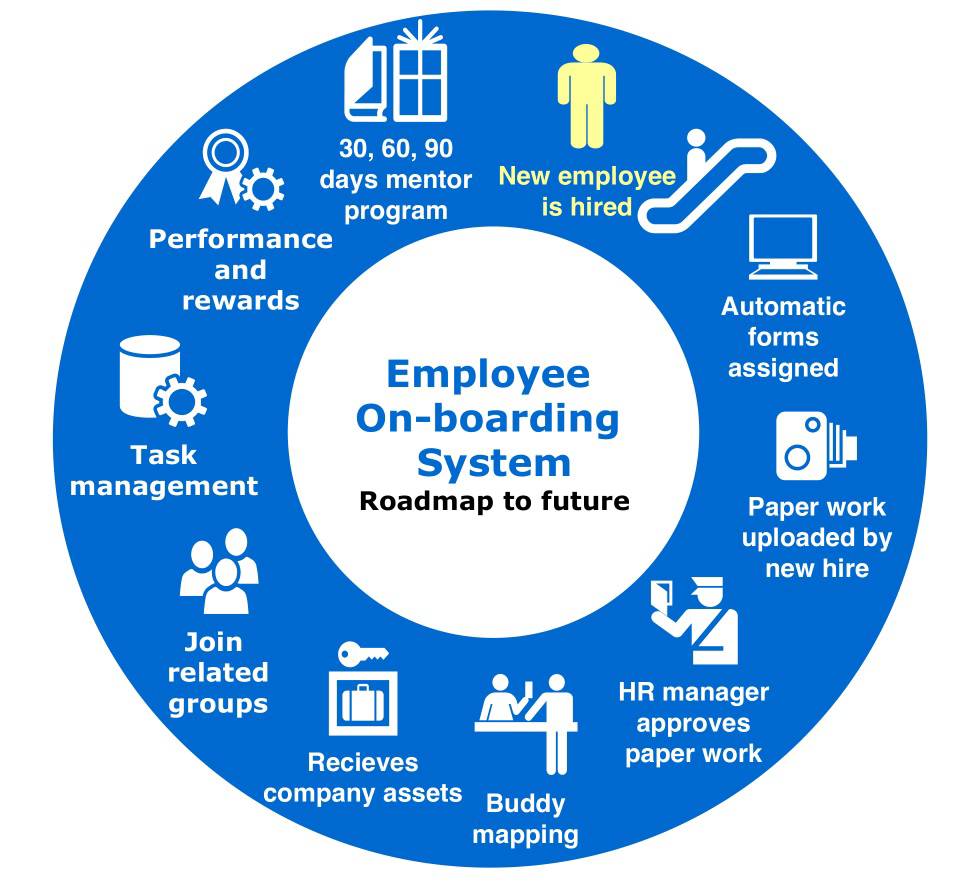
How to use onboarding data to predict employee performance

Onboarding employees is a huge task. You only get one opportunity to make a good first impression and help set your new employee’s choice to join your organization.
It’s difficult to have everything in order for day one when new hires are coming to your office, but what if they’re all starting from their own workplace?
For companies that operate with a fully remote workforce or the various who embrace remote hiring in addition to offices, onboarding employees becomes even tougher. Not only do you need to make sure they’re set up logistically from afar, but you need to make sure that they start to feel part of the team without meeting in person.
With 800 employees working remotely from more than 28 countries, Creative Social Intranet is no stranger to remote employee onboarding.
There’s a different kind of rapport and belonging created on a team of remote people. How onboarding plays out is an important role in setting up their first success, and as Creative Social Intranet learned their employees’ long-term presentation of work.
The role of employee feedback at a remote organization
In any organization, employee surveys are the start of the conversation with your people. They will not replace in-person conversations, but in an organization where employees are spread out across the world, they become an even more essential part of driving people-based decisions.
We take what is often implicitly understood in an in-person environment, and makes it directly available to us remotely. While we can’t depend on luck to connect with each other or understand what’s going across the organization, we can deliberately design opportunities to truly see and hear each other—and our employee feedback platform is an important way in which we do that.
At Creative Social Intranet, we talk about the task of collect, understand and act when it comes to employee feedback. Helping us understand those data points and how they work together is the job of a high-performing platform.
Then, we can take action where it’s required and most effective.
At a faraway organization, when employees know they have more than one medium through which to provide feedback, and they see action being taken because of their feedback, they’re more apt to buy into the system, creating a trustworthy cycle.
Knowing when employee performance is at risk
At Creative Social Intranet, the HR team wanted to know how the Onboarding program influence employee’s performance later on. With this knowledge, we could then take action to drive vast levels of success earlier in the employee journey.
Using Performance and Engagement, Creative Social Intranet was able to access special insights.
By connecting the employee onboarding data with the performance data, we found three key risk factors:
1. Are employees feeling productive?
New hires who reacted favourably to the onboarding survey question, “I am feeling productive” were 4.2 times more likely to be high performing (vs. low performing) at their 1-year mark.
Creative Social Intranet’s one of the members recalls having a conversation with a new hire who had mentioned not feeling productive in her first few weeks. While generally an action item to follow up on, the new insights from the employee feedback programme expanded the need to address it fast. The member knew that setting up a meeting with them to get to know the ways to capture quick wins could help enhance employee involvement and speed up the likelihood of employee’s success at Creative Social Intranet.
2. Is employee induction thorough and effectual?
New hires who responded favourably to the question, “My induction program was thorough and successful,” are 3.8 times more likely to be high performing (vs. low performing) at their 1-year mark. Onboarding at Creative Social Intranet is a week-long program designed to give new hires a solid foundation on an organization’s culture, community, faraway life, and design. New hires are welcomed as whole human beings and are invited to break through the screen as their most authentic selves.
We get out of training what we put into it. In order to get a lot out of training, we have to be fully mixed up and committed. If we are disengaged, that carries through to our success over time. We want to make sure we understand when and where new hires aren’t connecting well with the training methods the onboarding survey helps us do that.”
3. Does the new hire’s experience keep up to their expectations?
New hires who responded favourably to the question, “My experience of the organization has matched my expectations” are 3.1 times more likely to be high performing at their 1-year mark.
Working far away can sometimes look like the only option – you can work from anywhere, likely have flexible hours, and you lose the commute! However, there are real problems that can come along with faraway working, and it’s not the correct fit for everybody. After seeing unexpected levels of turnover 6-12 months in, Creative Social Intranet needed to check data from this survey question and others highlighted that there was a not a match between expectations and reality (i.e., that faraway life can sometimes feel not connected and isolating). We’ve since clarified employees’ hiring messaging to provide a more realistic preview of faraway life.
The value of connecting performance and engagement data
Collecting, understanding, and acting on employee feedback is not a “one-and-done” initiative. At Creative Social Intranet, we know there will be more insights to come from our engagement and work data.
We are sure that we will find that there are more examples of these unfavourable moments along the employee journey. Where we can see how putting efforts into changing something that’s really special for each team member has a really huge payoff. That’s what we are really looking forward to diving into next.
Categories: